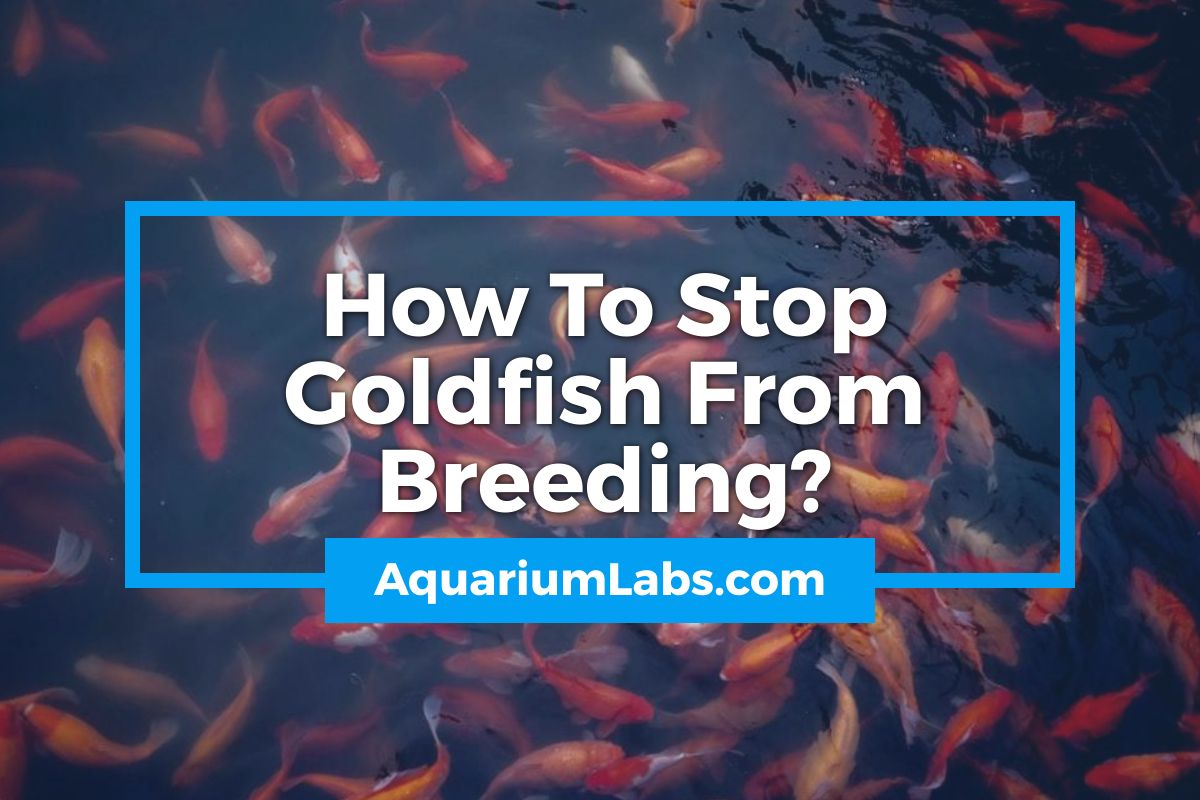More fish in the tank means more mess. A female goldfish lays an average of 100 eggs. If left unchecked, you could have a crowded tank with too many fish.
You’ll have to keep the filter working overtime to filter the water. You’ll also have to do more media changes and filter cleaning frequently too. All these things mean you’ll have to spend extra cash to take care of all that extra fish and keep them healthy.
So it is not out of place to prevent unwanted fish breeding. In fact, the practice ensures that your tank is spacious enough for your pets to lead a healthy and happy life. It also saves you feeding costs and the cost of maintaining filters that work overtime to keep the water in the tank clean.
This article discusses how to stop goldfish from breeding and other important things to think about. The points exposed in this piece will help you make informed decisions about how best to prevent unwanted fish breeding in your tank.
How Female Fish Get Pregnant?
Goldfish is an egg laying fish species. They do not give birth to their babies alive as livebearers do. It would be technically wrong to say that your goldfish is pregnant. They lay eggs that hatch into healthy babies.
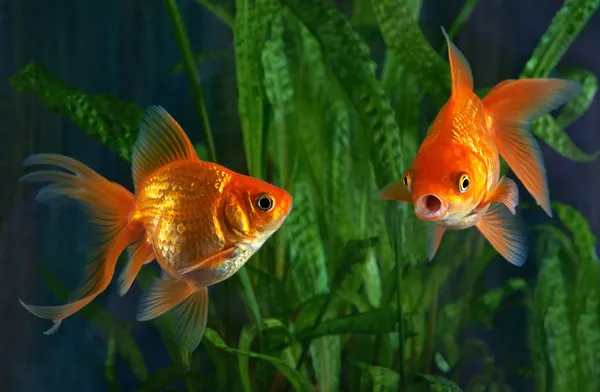
But for this purpose, a pregnant goldfish means an egg laying fish. The moment you notice a larger fish among the other fish in the tank that is your female goldfish, and it is about to produce eggs that will hatch into many baby goldfish.
Spawning is the most common means of fish reproduction. Spawning is when the goldfish deposits eggs, usually around or on plants in the water. After laying the eggs, a male comes in to fertilize as many as he can with his sperm. This fertilization process could take anywhere from 48 to 168 hours.
Aggressive Behaviors As Spawning Sign
Perhaps, the most noticeable sign that this egg laying fish species is about to breed is the aggressive behavior of both goldfish genders. When your goldfish begins to show aggressive behavior unlike its usual self, it is safe to deduce that it is ready to breed.
You will often notice male goldfish chase her everywhere while nudging at her body. You may find more than one playing catch with her. This usually wears her out. Sometimes, she ends up with torn fins.
Spawning Tubercles As Spawning Sign
The males develop spawning tubercles when they are ready for breeding. These are white bumps that appear and grow on the pectoral fins and around the gill covers. These bumps can be hard to recognize if you are not an experienced aquarist.
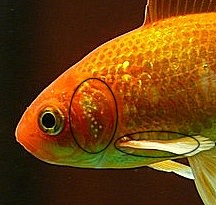
Bloating As Spawning Sign
Bloating of female goldfish is another sign that your fish is spawning. Although they are usually rounder than their counterparts, they grow larger in the process because they are about to lay eggs.
You might also find that she is irritated when they keep following her around in the tank.

Other signs that your goldfish is about to breed include loss of appetite/refusal of goldfish food and nesting behaviors from when it is close to laying eggs.
When Is Goldfish Mature Enough To Lay Eggs?
Note that goldfish mature sexually within ages one to two. But they don’t start to reproduce until they are adults. They become adults at about three to five years old. So for the first two years, you can relax and entertain no fear of unwanted fish breeding in your tank.

It is also a good time to learn working strategies to prevent unwanted fish breeding.
Appropriate Breeding Temperature Causes of Unwanted Fish Breeding With Goldfish
Goldfish breed in temperatures of anywhere from 50°F to 78.8°F. Naturally, goldfish breed in the late spring and summer. During this period, the progressive rise in the warmth of the water triggers the breeding.
Understand that it is the gradual change in the warmth of the water and not the change in actual temperature that induces breeding. An increase of about 2°F-3°F per day until you reach 74°F-78°F will give the specific tank conditions for your pets to breed.
Mixing Both Genders in the Tank Leads to Unwanted Fish Breeding With Goldfish
It takes two to tangle, and goldfish are no different here. Both genders of your goldfish are the two culprits involved in this crime of overpopulating your tank.
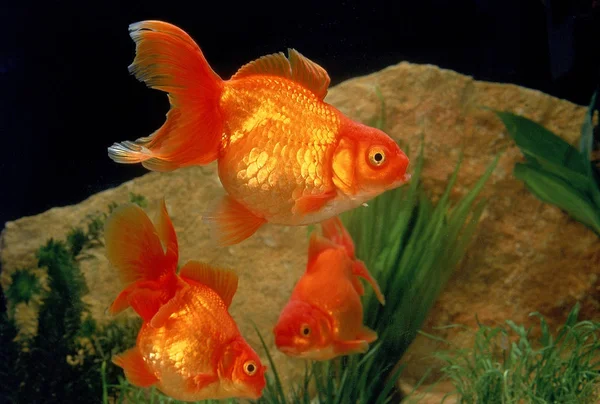
Usually, the breeding process begins with the males playing catch with the female. Then the female goldfish release eggs on plants or other conducive spots in the water. And finally, the male fertilizes them.
Ways To Stop Goldfish From Breeding
Keep Only One Gender (No Male and Female Fish in Your Aquarium)
Breeding as a process for goldfish can only be completed when you have a male and female in the tank. If you have only one gender, unwanted goldfish breeding will not occur in your tank.
You can hardly tell a male goldfish from a female at their young age until about a year. This is because that’s about the time they attain sexual maturity. But they do not breed until about another year or two before they start breeding. So you don’t have to rush.
The males usually nudge and push the female while chasing her around in the process. But the female usually tries to get away from them and sometimes sustains torn fins from all that chasing and nudging.
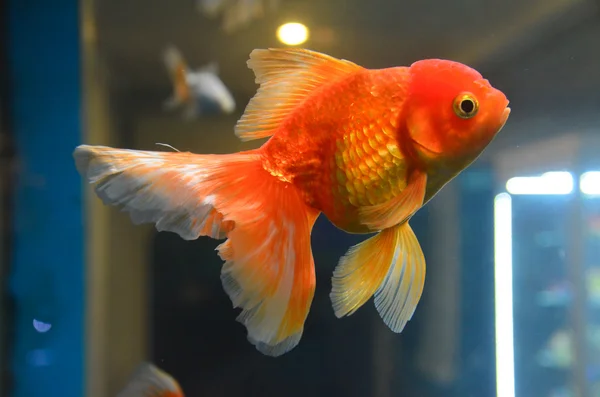
Another identifying feature of females from males is the vent. The vent is a goldfish part under the anal fin used for discharging waste. The vent of the males is usually more extended while that of the females is shorter.
The males usually have a longer and thinner body than the females’. The female goldfish are usually stubbier.
As highlighted above, the males have small white dots on the areas around their heads, gills, and fins. These dots usually appear when they are about to spawn. The females do not have these dots. You can use a hand lens to examine your pet for these dots.
These tips will help you distinguish their sexes and thwart the breeding process by separating them. To break the spawning cycle, you can move her from the main tank to a separate tank for about a week.
Avoid Some Very Specific Tank Conditions
Avoid a gradual increase in the warmth of the water in the tank and change the water less frequently.
A gradual increase in the water temperature in the tank is the cue for breeding. The change is like the natural increasing warmth in water bodies from winter to warmer seasons which signals the breeding season.
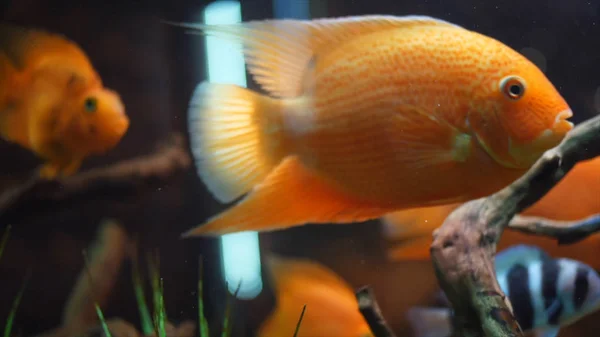
If you notice the chasing and nudging that signals the start of the breeding process, lower the temperature in your fish tank immediately. Leave it no higher than 69.9°F and ensure that it does not rise. If it does, lower it.
Freshwater favors breeding. Goldfish breed with good grace and happiness when the water is fresh. Less frequent water changes will stop breeding. If you usually change about 20-30% of the water in your tank every 7 days or so, do it less often. This will make it difficult for your pet to produce any offspring.
Include More Male Fish, Bottom Feeders, or Other Predatory Fish Species in the Tank
Another way to check unwanted goldfish breeding in your tank is by including bottom feeders to rid the tank of the eggs for you. You can add bottom feeders like the Cory Cats (Corydoras multiradiatus) and Bristlenose Pleco. They are great bottom feeders and will rid the tanks of the eggs for you.

So, if you mistakenly allow an increase in the temperature in your tank and cause your goldfish to breed, you don’t have to worry too much. These bottom-feeder fish will help take out all eggs or fish fry created in the process.
Alternatively, you can opt for other aggressive fish species that feed on fish eggs and fry (baby fish). Ensure that these fish can eat all eggs and fish fry before mixing them with your goldfish. You can also put more males in the tank to eat the eggs. They don’t have fatherlike instincts to protect their eggs or offspring. They see them as food.
With this solution, you don’t have to bother about mixing different genders of goldfish. You can have what you want and stay confident that the fertile eggs and fish fry will not survive in your aquarium.
The Bottom Line On How to Stop Goldfish From Breeding
As part of the Cyprinidae family, goldfish (Carassius auratus) is one of the most popular egg laying fish in the hobby. Although they lay multiple eggs at a time, this article explains the efficient ways to stop them from breeding if you want to keep them as pets.
Goldfish usually breed once a month in April and August when the weather is warmer. Ensure that you don’t trigger breeding so that you aren’t stuck with extra fish in your aquarium.
Related Reading:
Image Credits:
- about-goldfish.com

